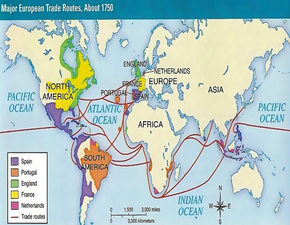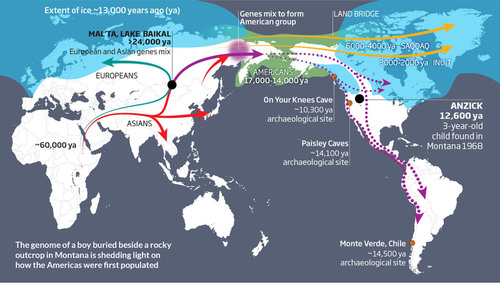TERRITORIAL MAPS:
The Development of a Continant:
The more study is done the more a person will realize that there are many viewpoints which are very different but not necessarily conflicting. The American continent was populated well before 1000ad and primarily around the boarders. What constitutes the Coloradso Arizona, New Mexics, and western edge of Texas, areas was called the "dead area" which was almost uninhabited for centuries. The huge central areas of the country were the Indian areas loosly seperated by various tribes. Because the tribes moved about their territories, nations exploring the land did not consider them the rightful owners. When our early nation purchased the "Louisiana Purchase" tract from France, for example, our forefathers didn't consider the land to be rtribal property. Because there were many tribes of the same Indian nations but seperate bodies, there would have been no way to determine who owned what. Surveying was to come many decades later often not actually being determined till more modern times. Even today, counties often fight over tracts of land. In the ancient times, boarders were general in nature rather than specific and defined.
The Continent Sometime Around and Before 1400:
Nations claimed land masses and were often not able to either define the exact areas or defend the area. They were just claims placed over those of the current residents living in a region. The idea that someone owned the "land" was a foreign idea to many. The American Indian's didn't understand this concept. It would be like me saying that "I" owned the air in this area and you couldn't use it! Even in the mid 1800's as people began to fence in property, many didn't understand how this could be. It would be like me saying that I won some form of "freedom" and you cant use it without my permission! Ownership continues to be an issue in micro ways in modern times, consider copyrights, etc.
The Lincoln Highway:
The Americas around 1640:
As the land was populated, areas were more defined. First defined by a general territory, then by counties within a larger area, then specific land tracts, then by a township, and finally by surveyed areas with specific markers. Many battles fought were over land areas as people encroached into the areas of others. At first there was enough land to go around, then the legal battles ensued. These issues still continue today.
The American Continent around 1800:
Ultimately huge land areas were determined by who could either defend the area or who could give away or trade the area. In many cases, as control or claims died, land was just shifted from own owner to another. For centuries ownership was a process of migration or claims!
Route 66:
Historic Route 66 had a great impact on the traveler in America. Route 66 is probably one of the most famous highway routs which had a huge impact till the 1970's.
The American Indian was active before 1,000 ad to the 1860's which was when the US government placed them in assigned reservations. After the 1860's, reservations were continually decreased in size until today when they are genuine rarities. There were still Indian, American skirmishes untill the early 1920's as additional land was taken from them. Note some interesting facts:
- tribes were extended family units which would seperate as groups became to large to adequatly survive!
- polygamy was common because of the fact that there were generally more women than men!
- there were only an estimated 75,000 "plains Indians" in the early 1800's!
- midwest and northern tribes depended largely on buffalo!
- southern tribes were often planters!
- horses did not come till the 1500's.
- American Indians are typically grouped in general categories in than there is no concise record of how many tribes existed and where they were active!
- if buffalo supplies were diminished, tribes fought for territories!
- northern tribes lived in tipis (tee pees) and southern tribes lived in huts!
- Indians typically lived short lives often not living beyond 30. Early death was more common than long life!
- diseases such as Smallpox, Cholera, and water born ailments kept tribes small!
- as late as the 1760's Indians often helped settlers fight British or French troops, after the early 1800's this changed because of the growth of the numbers of settlers which were threatening their only suvival!
The world as it is today!
The map below shows the early trade routs and the land areas claimed in the Americas by other nations.
The ancient world dating as far back as 13,000 bc. The arrows suggest where most historians of ancient history believe people groups traveled from Europe to our continent! There are however differnt views which change every 40 years or so, the most popular believing people traveled actoss the Bering Sea Streit.
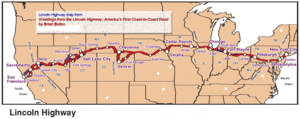
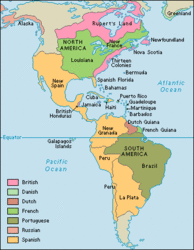
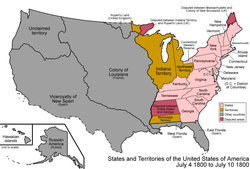
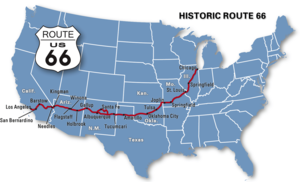
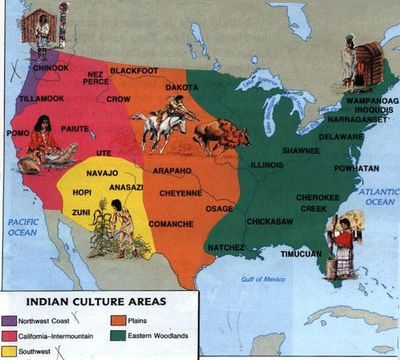
_600x349.jpg)
